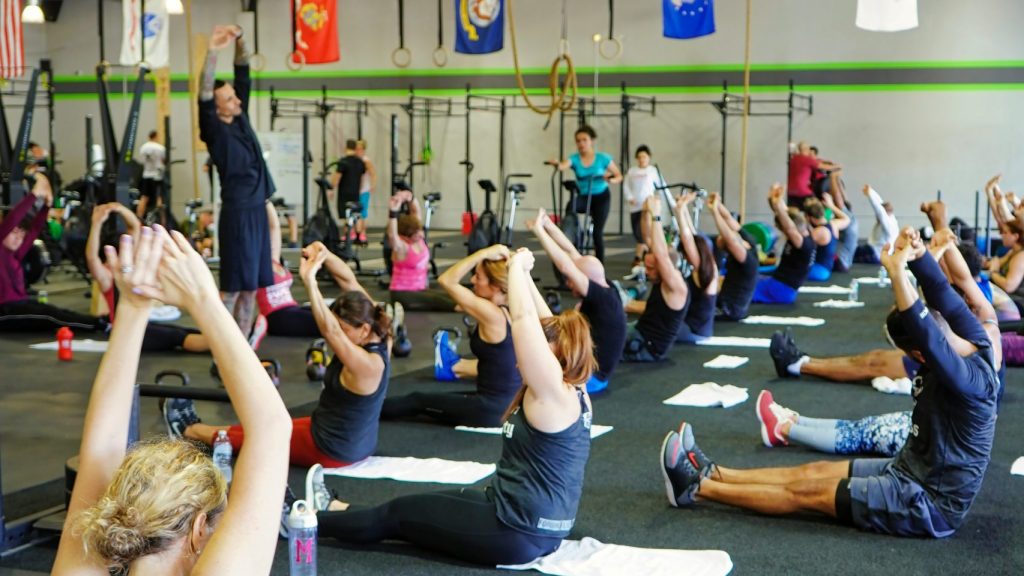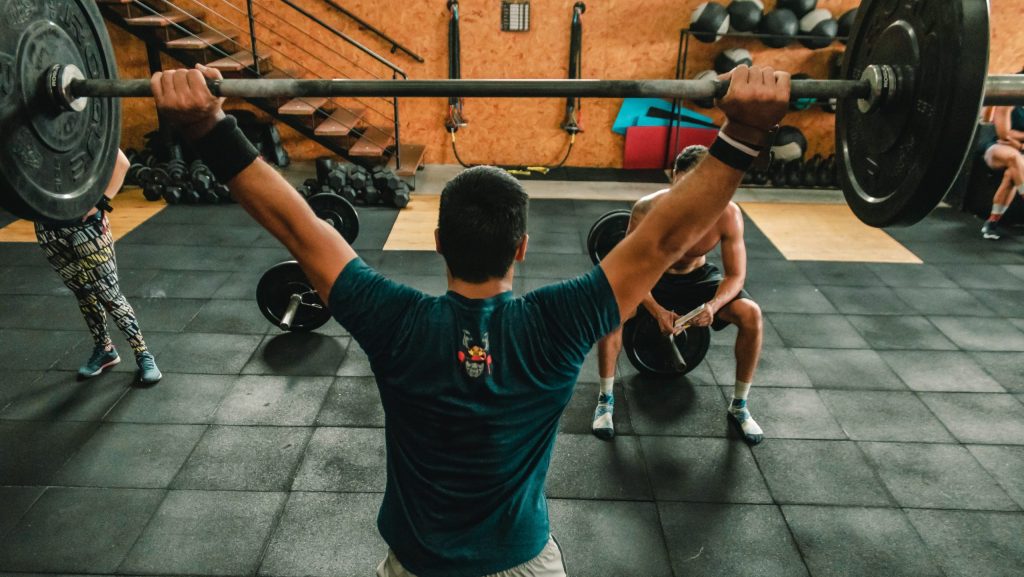Table of Contents
In the fitness industry, effective feedback is essential for optimizing training outcomes and achieving health goals. It provides crucial insights and guidance, helping both fitness enthusiasts and professionals to maximize their efforts and attain their objectives. This introduction highlights the critical importance of feedback in enhancing workout efficiency and achieving desired fitness results.
“Did you know that tailored feedback in fitness can improve client results by up to 70%? Discover how you can harness the power of effective feedback to transform your training approach.”
Feedback in fitness encompasses various forms, including personalized coaching and the use of advanced technology. It serves as a vital component for motivation, offering necessary adjustments and recommendations tailored to the individual’s needs. Whether delivered through verbal encouragement, strategic advice, or digital data analysis, feedback is instrumental in guiding individuals towards improved performance and success.
- Understanding the Importance of Fitness Feedback: Highlights why feedback is crucial in increasing motivation and improving performance. This section will explain how feedback serves as a key component in achieving specific fitness goals, supported by scientific research and anecdotal evidence.
- Techniques for Delivering Effective Feedback: Discusses various methods and communication strategies for providing constructive and motivational feedback in fitness settings. This part will offer practical advice for fitness coaches and trainers on how to provide feedback effectively.
- Integrating Technology in Fitness Feedback: Examines how technological advancements can be used to provide precise and real-time feedback. This includes wearable devices, fitness tracking apps, and virtual reality technologies that enhance the feedback loop.
- Feedback Systems in Group Fitness: Analyzes how feedback is managed in group fitness settings. It covers the strategies for delivering effective feedback that meets the diverse needs of the group, ensuring that each participant benefits from personalized insights.
- Measuring the Impact of Feedback in Fitness: Focuses on methods for assessing the effectiveness of feedback within personal training sessions and broader fitness programs. It discusses metrics for tracking feedback effectiveness and how these insights can guide trainers in refining their strategies.
This fact underscores the significant impact that proficient feedback can have on a person’s fitness journey. By utilizing effective feedback techniques, trainers can enhance their clients’ performance, contributing to a productive training environment.

Understanding the Importance of Fitness Feedback
Feedback in fitness is crucial for enhancing both motivation and performance. It plays a critical role in the training regimes of personal trainees, professional athletes, and casual fitness enthusiasts. The subsequent content discusses the vital impacts of feedback, detailing its importance in motivating individuals, improving performance, and facilitating goal achievement in fitness settings.
Role of Feedback in Motivation
Feedback is a key driver of motivation in fitness. It provides essential encouragement and recognizes the efforts and progress of trainees, which is vital for maintaining high motivation levels. When trainers give specific comments on a client’s improvement, it reinforces the client’s efforts and motivates continued progress. Personalized feedback also strengthens the trainer-trainee relationship, creating a supportive environment that promotes ongoing engagement and commitment to fitness goals.
“Studies have shown that immediate, specific feedback is more effective in improving performance than delayed or vague feedback because it allows for immediate application and adjustment.”
Impact on Performance Improvement
Feedback has a direct impact on performance by providing specific insights that trainees can use to enhance their physical abilities. This includes immediate and precise corrections on form or technique during workout sessions, which facilitate quicker improvements. Immediate, specific feedback has been shown to be more effective than delayed or vague feedback because it allows for immediate correction and better results.
| Type of Feedback | Effect on Performance |
|---|---|
| Immediate, Specific | Highly Effective – Allows for immediate improvement |
| Delayed, Vague | Less Effective – Does not provide clear direction for improvement |
Feedback as a Tool for Goal Achievement
Feedback is essential in setting and achieving realistic fitness goals. It involves setting clear targets and regularly reviewing progress, which keeps trainees focused and on track to meet their objectives. Personalized feedback aligns training with an individual’s specific fitness levels and goals, enhancing motivation and likelihood of success. Regular use of performance tracking tools and progress checks also helps in making goals measurable and achievable.
Feedback is indispensable in the fitness industry, boosting motivation, enhancing performance, and aiding in the achievement of fitness goals. By understanding and implementing effective feedback strategies, fitness professionals can improve their coaching effectiveness, while individuals gain more control over their fitness progress. Further exploration of practical feedback applications reveals its transformative potential in improving fitness outcomes. Continue reading to learn more about these effective feedback practices and their benefits in fitness training.

Techniques for Delivering Effective Feedback in Fitness Training
Effective feedback in fitness training goes beyond exercise knowledge; it requires proficiency in communication strategies that effectively engage clients. This section examines several techniques that not only motivate but also significantly enhance client performance.
Constructive Criticism Techniques
Constructive criticism in fitness is essential for helping clients recognize areas needing improvement without feeling discouraged. Achieving this requires:
- Focus on Specific Behaviors: Feedback should be directed at specific actions or behaviors rather than general performance. For example, highlighting how adjusting a client’s form during an exercise can increase effectiveness, rather than broadly stating the need for more effort.
- Encouraging Self-Assessment: Motivating clients to evaluate their own performance helps them engage actively in their learning process. Questions like, “How do you feel about your session today?” or “What could you improve?” prompt self-reflection and responsibility for personal growth.
- Using the Sandwich Method: This method involves delivering negative feedback between two positive comments to soften the impact and maintain motivation. For instance, a trainer could commend a client’s dedication, suggest improvements in technique, and then conclude with positive feedback on the client’s overall progress.
Positive Reinforcement Strategies
Positive reinforcement is effective in boosting client confidence and motivation, encouraging them to maintain or improve their performance.
“Positive reinforcement can increase the likelihood of a desired behavior repeating by up to 60%, making it a critical strategy in fitness training.”
- Immediate Praise: Giving praise right after a client achieves something boosts their morale significantly. Immediate positive feedback encourages repetition of the desired behavior.
- Reward Systems: Setting up a system of rewards can motivate clients to achieve higher performance levels. Rewards can range from verbal recognition to incentives like session discounts or fitness gear for achieving certain milestones.
- Highlighting Progress: Regularly showing clients how much they have improved since starting their fitness journey is a powerful motivator. This can be achieved through verbal feedback, progress charts, or visual comparisons like before-and-after photos.
Tailoring Feedback to Individual Needs
Customizing feedback to fit individual client profiles is crucial for effective fitness training. This includes:
- Personalization: Adapting feedback to match personal fitness goals and levels ensures it is relevant and motivating. For beginners, this might mean more encouragement and basic advice, whereas advanced clients may need more detailed feedback to refine their techniques.
- Cultural Sensitivity: Understanding and respecting a client’s cultural background can affect how feedback is given and received. Trainers need to be aware of and sensitive to these differences, adapting their feedback style as necessary.
- Adjusting to Learning Styles: Recognizing a client’s preferred learning style can help in delivering feedback more effectively. Whether a client learns best through visual cues, detailed verbal instruction, or hands-on guidance, trainers should adjust their feedback accordingly.
Proficiency in feedback delivery is essential for fitness professionals to enhance the training experience. Effective feedback not only motivates clients but also facilitates substantial improvements in performance and satisfaction. By implementing the outlined strategies, trainers can establish a positive, productive, and personalized training environment. These techniques, when applied effectively, lead to significant improvements in client outcomes and overall training success. Continue reading to learn how to apply these feedback techniques effectively in various training scenarios.

Integrating Technology in Fitness Feedback
Technology has significantly impacted fitness training by providing tools and methods that improve monitoring and performance optimization. This integration enhances both the accuracy and immediacy of feedback, which is crucial for effective fitness training. This section explains how wearable devices, fitness tracking apps, and virtual reality technology are enhancing feedback delivery systems in fitness.
Wearable Fitness Technology
Wearable devices such as fitness bands and smartwatches have become integral to contemporary fitness routines. These devices are equipped with sensors that monitor a range of activities and health metrics like heart rate, calories burned, steps, and sleep quality. They provide immediate feedback that can adjust a workout in real-time, improving safety and efficacy. For instance, detecting an abnormal heart rate prompts users to modify their intensity, potentially preventing injury.
These devices also offer GPS tracking, enhancing outdoor activities by providing data on routes, distances, and pace. This detailed feedback helps users optimize their workouts and better understand their physical capabilities and limits.
“Virtual reality technology in fitness can increase user engagement by up to 70%, making workouts more enjoyable and effective.”
Apps for Tracking Progress
Fitness apps are vital for providing detailed feedback by tracking and analyzing performance data over time. They show trends and progression in various fitness metrics, which is critical for long-term goal setting and achievement. Fitness apps often integrate with wearable devices, creating a unified platform where users can view all their health data, making it easier to track progress and set fitness goals.
Many popular fitness apps also tailor workout programs based on the data collected, offering personalized training regimens that adapt to the user’s improving fitness levels, thereby enhancing the overall training effectiveness.
Virtual Reality and Feedback
Virtual reality technology introduces an innovative way to engage in fitness by simulating varied training environments. This technology provides interactive feedback by adjusting scenarios in real-time, such as changing terrain in a cycling workout to match the user’s speed and resistance settings.
Virtual reality not only makes workouts more engaging but also enables the delivery of specific feedback that enhances training effectiveness. For example, VR can simulate a cycling path that adjusts its difficulty based on the user’s performance, providing a challenging yet manageable workout tailored to the user’s current fitness level.
| Device Type | Key Features | Typical Use |
|---|---|---|
| Fitness Bands | Track steps, sleep, and basic heart rate. | General fitness and daily activity monitoring. |
| Smartwatches | Includes fitness tracking, plus app notifications, GPS, and often mobile connectivity. | Comprehensive fitness tracking and mobile connectivity for a connected lifestyle. |
Advanced technologies in fitness feedback not only support traditional training methods but also introduce a new dimension of customization and interactivity. These technologies provide accurate, timely feedback that motivates users and helps them achieve their fitness goals efficiently. As technology evolves, its integration into fitness routines is expected to offer even more innovative solutions that further enhance training outcomes and personalize the fitness experience. Discover how these technologies continue to transform the fitness industry, leading to improved user engagement and training results.

Feedback Systems in Group Fitness
Feedback in group fitness settings involves distinct challenges that require specific strategies to effectively manage and deliver feedback that supports both individual and group needs. Managing feedback in such settings is critical for enhancing the effectiveness of training and maintaining a cohesive group dynamic.
Strategies for Group Feedback
Effective feedback in a group setting needs to be strategically planned and executed. Immediate, real-time coaching during sessions allows trainers to correct forms and motivate participants instantly, enhancing the effectiveness of the workout for everyone involved. Additionally, post-session feedback discussions can reinforce good practices and identify areas for improvement, making these sessions valuable for collective learning.
Incorporating technology through fitness apps helps trainers monitor individual performances and provide personalized feedback efficiently, even in larger groups. These apps track and analyze performance data, enabling trainers to offer tailored feedback without neglecting group dynamics.
- Real-time coaching: Immediate corrections and encouragements during the session.
- Post-session feedback: Reviewing session outcomes with the group to reinforce good practices and identify areas for improvement.
- Technology integration: Using fitness apps to track individual performance and deliver personalized feedback in a group setting.
Balancing Individual and Group Needs
Trainers must skillfully balance feedback to address both individual participant needs and group cohesion. This involves giving personalized attention during sessions without disrupting the flow of the class. Trainers can achieve this by segmenting feedback, providing general comments to the group while giving more specific guidance to individuals as needed.
Encouraging peer feedback within the group can also enhance learning and community spirit. This strategy helps participants feel more involved and supportive of one another, improving both individual and group performance.
“Research indicates that group fitness participants who receive personalized feedback show a 30% greater improvement in performance compared to those who receive generic feedback.”
Building a Feedback Culture in Classes
Establishing a positive feedback culture is critical for fostering an environment of continuous improvement. Trainers are key in developing this culture by demonstrating how feedback should be given and received. Structured feedback sessions, where trainers and participants discuss performance openly, can significantly enhance the learning experience and build trust among group members.
Celebrating successes and recognizing individual achievements within the group setting are also important for maintaining high morale and motivation. Acknowledging progress and effort encourages participants to continue working towards their fitness goals and supports a culture of positivity and achievement.
Providing effective feedback in group fitness settings is crucial for improving individual performance and enhancing the group experience. By implementing the strategies outlined, trainers can ensure that feedback is constructive, balanced, and supportive of all participants. These methods not only help in achieving fitness goals but also promote a supportive and motivated community within the fitness classes. Further exploration of these strategies can provide trainers with additional tools to ensure successful feedback delivery in various group fitness scenarios.

Measuring the Impact of Feedback in Fitness
Measuring the impact of feedback in fitness accurately is essential for validating the effectiveness of training methods and refining coaching strategies. This precision allows trainers to optimize their feedback mechanisms, enhancing client engagement and achievement rates. This section details the metrics and methodologies used to assess the effectiveness of feedback, enabling fitness professionals to customize their strategies to secure the best results.
Metrics for Feedback Effectiveness
To measure the effectiveness of feedback, trainers use various metrics such as performance improvements, adherence to training programs, and client satisfaction. These metrics provide insights into the impact of feedback and guide trainers in improving their coaching methods.
Performance improvements can be quantified by monitoring increases in fitness levels over time, such as greater strength, endurance, and flexibility. These improvements directly indicate the success of feedback during training sessions. Adherence to training programs, measured by how consistently clients follow their exercise schedules and guidelines, reflects the motivational quality of feedback. High adherence rates typically indicate that clients are motivated and committed to their regimens. Additionally, client satisfaction, often gathered through surveys, offers qualitative data on clients’ perceptions of the feedback’s value and effectiveness.
Long-term Tracking of Progress
For a comprehensive assessment of feedback’s impact, long-term tracking of client progress is imperative. Tools and technologies like fitness tracking devices and software play a significant role in this process, enabling the recording and analysis of detailed performance data over time.
These tools track a wide array of data, including workout frequency, intensity, recovery rates, and physiological changes, providing a comprehensive overview of a client’s progress. Such detailed monitoring allows trainers to tailor feedback and training plans more effectively, addressing specific areas of need for each client. This ongoing adjustment maximizes training efficacy and ensures that feedback remains relevant as clients’ fitness levels evolve.
Client Testimonials and Case Studies
Client testimonials and case studies are valuable for illustrating the real-world impact of effective feedback. These accounts showcase individual success stories and the specific feedback strategies that contributed to achieving fitness goals.
Reviewing these testimonials and case studies enables trainers to identify effective feedback techniques and adapt their strategies accordingly. For example, a case study might demonstrate that gradual, encouraging feedback effectively boosts confidence and commitment among beginners, whereas advanced athletes benefit more from precise, data-focused feedback that targets performance optimization.
Effectively measuring feedback’s impact is key to the continuous improvement of fitness training programs. Utilizing detailed metrics and advanced tracking systems allows trainers to verify the effectiveness of their feedback, adapting their approaches to better meet individual client needs. This rigorous approach not only improves specific training plans but also enhances the overall quality of fitness training as a professional service. Trainers committed to using innovative measurement tools and techniques can maintain their effectiveness and responsiveness, meeting their clients’ evolving fitness requirements.

Conclusion: Best Practices for Fitness Feedback
This article has covered the comprehensive scope of fitness feedback, from the foundational importance to the advanced use of technology in enhancing client outcomes. We have seen how tailored and effective feedback is crucial for both personal and group fitness experiences, influencing fitness journeys positively.
“Take your training to the next level: implement these proven feedback strategies and witness significant improvements in motivation, performance, and client satisfaction. Start today to transform your fitness coaching approach!”
- Importance of Feedback: Feedback is essential in fitness regimes, acting as a key factor in motivating clients and improving performance. Initially, we discussed how feedback is necessary for setting goals and achieving them, highlighting its role in increasing motivation and enhancing performance.
- Effective Feedback Techniques: We then examined specific techniques for delivering effective feedback, including constructive criticism and positive reinforcement, tailored to meet individual client needs. These techniques are crucial for engaging clients effectively and making the training experience more beneficial.
- Technology in Feedback: Advancements in technology, such as wearable devices and virtual reality, provide trainers with sophisticated tools for delivering precise and real-time feedback. These technologies enhance the feedback process, making it more engaging and effective for clients.
- Feedback in Group Fitness: In group fitness settings, the challenge of delivering individualized feedback within a dynamic group environment was explored. Strategies for balancing individual attention with maintaining group dynamics were discussed, emphasizing the importance of building a positive feedback culture.
- Measuring Feedback Impact: We discussed measuring the impact of feedback through specific metrics and long-term tracking tools, which is crucial for assessing the effectiveness of feedback and ensuring continuous improvement in fitness training.
Effective feedback is integral to successful fitness training. The strategies discussed provide a framework for fitness professionals to deliver feedback that is not only informative but also transformative. By adopting these practices, trainers can ensure their feedback mechanisms foster an environment conducive to growth, motivation, and achievement. Feedback, when delivered correctly, is instrumental in unlocking a client’s potential, helping them exceed their fitness goals.